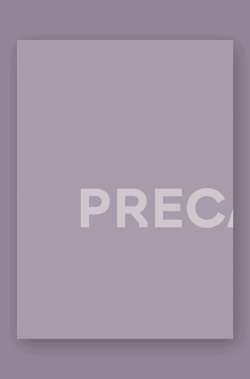Flexibility for survival
May 26, 2008

Article written by Xavier González
“Flexibility is not the exhaustive anticipation of all possible changes. Most changes are unpredictable. (...) Flexibility is the creation of a capacity with a wide margin that enables different and even opposing interpretations and uses” (1)
According to Charles Darwin, animal and plant species alike must adapt to their environment in order to survive. The same can be said of architecture.
Architecture, therefore, needs to be adaptable and flexible and to have a certain intrinsic capacity for change that will save it from destruction and prevent it from becoming, as so many monuments built in the past, merely a source of stone for subsequent buildings. Time will inevitably follow its course and every building will eventually undergo changes, or be destroyed.
History has given us many examples of places which have been altered or urban spaces given a new use; this process, however, has occurred following spontaneous, linear ideas without the contribution of an architect’s knowledge.
In none of these historical examples can this process to be associated with the conception of an idea or cultural process. It shows, rather, a likeness to vernacular architecture.
Form versus function
This practice that is known today as refurbishment, reconverting, transformation or recycling, illustrate how deeply the links between architects and their environment and their past have changed. In fact, although architectural transformation has always existed, its recognition as a field of discipline within the realm of architecture, in the sense of a cosa mentale, only reaches as far back as the early sixties. This exercise brings up the question of the life-span of architecture, and establishes a division, a speciality: the bricoleur d’architecture, as defined by Henry Lévy-Strauss (2) in La Pensée Sauvage: “the instrumental universe of the bricoleur is closed, and the rule of the game is to make do at all times with the materials at hand”... “We might say that an engineer plans out his universe, but the bricoleur has to make use of a collection of waste materials left over from human efforts”. “The world of the bricoleur is defined solely through its instrumentality (...) because elements are selected or preserved on the basis of ‘this will do’ (...) without these elements necessarily being put to a precise and determined use”.
The earliest examples occurred in the United States. In San Francisco, 1962, a chocolate factory was transformed into a building complex including a shopping mall, offices and housing, on the design by J. Matthias and L. Halprin. To this day, this project is one of the city’s major tourist attractions.
Other important American agencies such as Hardy, Holzman, Pfeiffer also gave us some of the earliest designs for using old buildings in new ways, such as the Newark Community Center in New Jersey, 1969.
Hugh Hardy, a pioneer in refurbishing, made the following defining statement (3):
1. Old and new are equally important. There is no present without a past and to give new life to old structures is just as valid as building new ones. The present contains the past. The future is essentially determined by the present, not by utopia.
2. Diversity of spaces ensures greater flexibility than the use of movable dividing walls, ceilings or floors. It is easier to move people than to re-arrange architecture.
3. Unifying architectural elements is not essential in creating an order. It is possible to achieve order with disparate parts.
4. Buildings are never definitive. They cannot be permanent in the midst of a society undergoing an active process of evolution.
5. Activities do not necessarily correspond to enclosed spaces. Some can take place within and between several places at the same time.
This statement, from a post-modern perspective, represents a fundamental turnaround in architects’ attitudes and confirms the crisis affecting the Modern Movement. It signals, too, the discovery of the relationship between architecture and its history; memory and its context; ideas which have nothing to do with destruction or with emptiness, as was frequently the case until then. The greatest contribution, the real revolution, however, lies in the abandonment of the taboo relating to the form-function binomial. The title of this article is taken from the
famous painting by René Magritte, La Trahison des images, 19294. The object could have the shape of a pipe but not serve its purpose. The painting sums up the entire history of western philosophy on the basis of the confrontation between the senses and the power of reasoning, from a form halfway between sensitivity and thought. Are my eyes to be trusted? Do they perceive reality, or are they fooled by images just as we are when we regard the painting?
If we accept that a warehouse can serve another purpose, such as housing for instance, form is freed of its contents: thus emptied, it is ready to accommodate a new activity as adequately as any other container. The history of the avant-garde movement –from the futurists to Walter Benjamin or the CIAM– is, on the contrary, based on what is destructive, inevitable –a tabula rasa as a purification process, linked to a cleansing process in order to create the ideal conditions for “the arrival of the new man”.
Le Corbusier’s Voisin plan is a perfect example. The only parts remaining of Paris are just a few historic streets, treated as if they were follies in an idyllic park. All in the name of health and progress.
Recycling and creating typologies
Recycling affects every architecture-related sector, mainly amenities but housing too. Experiments with these new spaces have been carried out before by artists, allowing further research to be carried out in this field having established new styles of habitation. These artists are some way ahead of architects who were content with merely adapting or classifying their research and findings. Thanks to their awareness of new trends and transformation,
we owe the most important typological breakthroughs in 20th Century habitats to artists: ateliers d’artistes and the loft.
The atelier is the artist’s workspace par excellence. It is characterised by a large two-storey central volume, a glass front which on the whole faces north and a mezzanine floor. This space was quickly domesticated by Le Corbusier who, from the Ozenfant atelier through the pavilion named L’Esprit Nouveau to the Unité d’Habitation, did not cease to employ it throughout his career as a newly invented type of dwelling. The atelier was considered the earliest expression of a new space and the modern home. The villa-buildings built in 1925 confirm the change
in dimensions and the passage from one prototype to another, from a single object to one with a more collective dimension.
The loft was to become the new workspace for artists for the last thirty years or so of the 20th Century, but contrary to the workshops, it did not benefit from a previously established typical space. This space is more closely linked to a transformation process, because it arises from the occupation, recovery or recycling of warehouses or spaces originally used for other purposes. The loft is characterised by its extensive, deep, blank and undivided space to which the structure itself lends all its potential and flexibility in an effort to adapt the space it contains.
In the late sixties, New York-based artists searching for new places in which to work, in line with their economic possibilities and the new forms of artistic expression, invested in properties in the Soho and Tribeca districts, occupied until then by warehouses and half-deserted spaces.
Donald Judd, Andy Warhol and Sol Lewitt, to mention just a few, set up their studios there and these new living spaces very soon became the new style, the latest fashion in housing.
With their common origins, the loft and the atelier have benefited from the same process of divergence, and even today are as two typological references in the field of housing research.
Inclusion, alteration and addition Currently, it is the turn of office blocks to be involved in the recycling process. Apart from the architectural problem, the changeover to housing from their former bureaucratic activity has acquired political importance.
The recent economic crisis has freed tens of thousands of square metres of obsolete office facilities and various associations have not hesitated in pointing out the contradiction between the demand for social housing and these abandoned buildings. In every city or provincial town there is always something that can be recycled.
This is usually a factory, which forms part of the local architectural heritage.
Depending on the outer envelope of the construction in question, architects faced with this problem respond with a variety of attitudes, which may be classed in three main lines of action: inclusion, alteration, and addition.
Inclusion shows strict respect for the existing outer shell and facades. The new programme is installed within the old walls.
This is the case of most of the New York lofts and represents the original spirit of this movement. In this technique, a closed space is occupied, colonised, like nomadic tribes who set up camp on unmapped territory.
The space is transformed from within. There are many examples of this technique all over the world dating from the sixties. However, the loft is still strongly influenced by its artistic origins and remains closely linked to urban culture. Over the years it has become a very real social movement, a sign of identity and of belonging to a certain social class. For this reason, it is very difficult to find significant projects that rise above a state of being “hand-stitched”, to achieve a degree of maturity that elevates them to a collective dimension.
The most surprising example is undoubtedly the Beistegui apartment, refurbished by Le Corbusier in 1931, upon the roof of an office block on the Champs Elysées in Paris. The interior layout is complemented on the exterior, through a series of walled terraces forming a mirror-image: the house on the outside, as if something from a novel by Italo Calvino, with sliding doors containing a hedge, chairs, tables, a sideboard, fireplaces, and mirrors furnishing the rooms. This installation and the dual outside-inside impression correspond to the surrealism movement which was beginning at the time.
The second attitude, alteration, consists of working simultaneously on the interior and the outer shell itself, thus achieving a more radical transformation, the alteration of the matrix, which will lead to a new project through superposition or fusion. This process might be described as palimpsest, that is to say, erasing or removing the original text from paper or canvas in order to recycle and write over it. To architecture, as to the canpresenvas, it is a matter of writing a new programme or a new project upon the same medium.
As for addition, the existing building is treated as a starting point. In this way, the addition of other buildings can create a coherent complex which, in a single stroke, links the recovery and the recycling of a given space, a solitary object, and thus succeeds in bringing about its transformation.
What is the essential spirit of the loft? It is, in actual fact, not so much a question of inhabiting a space, as of occupying it. The distinction is important, as the traditional habitat is of a sedentary nature. The loft affords a nomadic dimension in keeping with the spirit of the end of this century. A settlement takes place on a plain very much in the same way as a covered area of space may be occupied, and built up gradually. This space is in most cases structured by floating volumes, often mobile or autonomous. Spaces are fluid, flexible, without strictly defined functions. The whole behaves like a bivouac and has its own interior plan in which interstices play an articulating role.
It is of interest to make a comparison between the two: the city and the traditional habitat, and the modern city and the loft. In the case of the former, the interior divisions give the inner spaces a predominant filled-up appearance. This quality is a federative element, where the corridor represents emptiness. In the second case, on the contrary, emptiness is broader and it articulates and organises the collection of objects giving unity and coherence to the whole. The outer walls are the boundaries.
Loft and derivatives
With their common origins, the loft and the atelier have benefited from the same process of divergence, and today are two major typological references as exceptional, significant spaces –present in films or advertisements–, and in research into the function of inhabiting a space. On the basis of these prototypes, architects have gradually classified spaces aiming to create a type or model which can be reproduced. They strive to separate the loft from its original context, with close links to transformation processes, to endow it with autonomy of its own. Applications stemming from such research are beginning to materialise.
Many architects today are interested in developing these derivatives. Europan, a housing laboratory in every sense of the word, is a good example of this fascination. The results of this contest usually provide a framework for new trends, both in the field of cells and aesthetics.
Permanence and duration
The success of the recycling process which began some thirty years ago is undeniable. The loft has become a universal model. Beyond the invention of a new type of habitat, the branching-off process which brought it about has led to a new way of looking at things, and a new attitude towards history. It has, furthermore, favoured the appearance of a new architectural praxis. The gradual formulation of the concept of transformation has addressed the important question of the duration of the life-span of architecture. How long should any given architecture exist? Should it live forever? Should it last, as Antonio Sant’Elia claimed, an entire generation? For forty years, as Rem Koolhaas argues? Is architecture to become just another consumer product? Is it going to become a wholly flexible construction system, that is to say, a simple skeleton allowing unlimited spatial variation so that any change of use can be accomplished by putting on or removing modular, removable facade panels like garments? Are these measures sufficient to ensure greater longevity for buildings? Which buildings, then, will be recycled tomorrow? What will the lofts of the future be like? What about the obsolete underground parking lots, shopping malls, department stores and hypermarkets? All this can indeed be considered as our renewable heritage of tomorrow. Our future places to be remembered in their original form; our memory, this act of recollection, which by definition is a selective process. It selects, chooses, rejects. Memory will or will not forget; may recall, or drop into oblivion. Oblivion moreover is not entirely the opposite of memory, as Friedrich Nietzsche pointed out. Oblivion is a force which transforms and assimilates the past, heals wounds, repairs losses and may reconstruct ravaged, useless forms.
Article published in a+t 12. Housing and flexibility I.
Notes
(1) S, M, L, XL. Rem Koolhaas. Page 240
(2) Henry Lévy-Strauss. La pensée sauvage. Plon Editions. 1962. Pages: 44-45
(3) Text by Hugh Hardy in the magazine Architecture d’Aujourd’hui. 170. November-December.
1973. Page 80
(4) René Magritte. La trahison des images, 1929. Oil on canvas. 60 x 81. Los Angeles County Museum


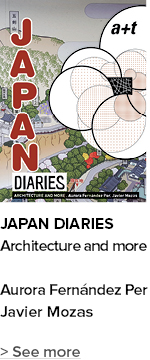
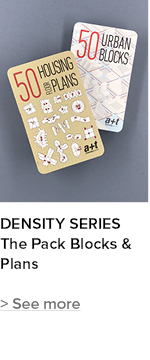


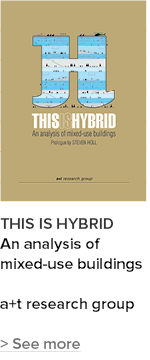


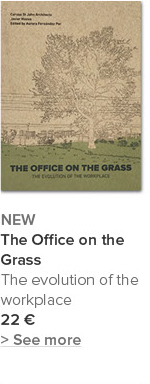

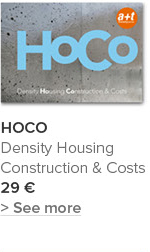
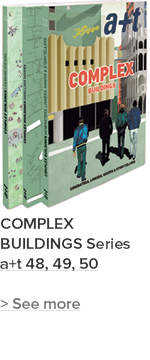

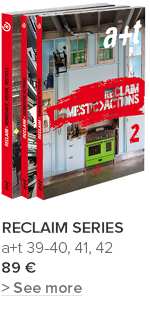
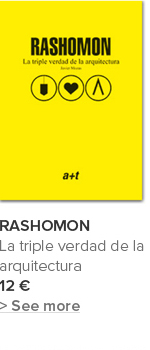
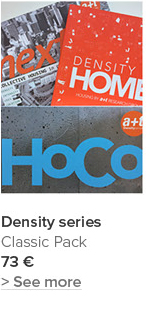





 I've read and agree to
I've read and agree to 


